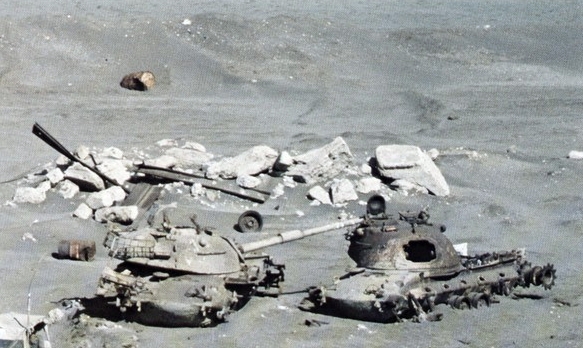The Yom Kippur War started when two Arab countries, Egypt and Syria, attacked Israel on Yom Kippur, the Jewish holy day.
The Six-Day War
In June 1967, Israel Defense Forces struck and took over three neighboring Arab territories. The territories were Sinai (Egypt), West Bank (Jordan), and Golan Heights (Syria). At the time, Egypt’s leader was President Nasser who had previously led a coup against the Egyptian King, Farouk I. President Nasser turned the government of Egypt into a socialist government. As a result, Egypt received support from the Soviet Union.
In 1970, Nasser died and Anwar Sadat became the President of Egypt. Sadat started to change the policies Nasser had enacted. In 1972, Sadat removed Soviet troops and advisors by the thousands from Egypt.
In Syria, there was another coup that led Hafez Al Assad to be the head of the Syrian government.
How the Yom Kippur War started
Both new Arab leaders wanted to strengthen their new positions and make their control over the two countries legitimate. They aimed to do this by reclaiming the territories their countries had lost to Israel in the Six-Day War. Egypt and Syria were joined by Libya, another Arabic country, and the three of them formed the Federation of Arab Republics. Then, the Federation of Arab Republics started to plan for war.
They chose to attack the day of Yom Kippur, as it is a Jewish holy day. The forces of the Israeli army would not be expecting or prepared for an attack. Supported by armed forces from the Arab countries Iraq, Jordan, Saudi Arabia, Morocco, and Lebanon, as well as the Soviet Union, the attacking forces managed to take the Israeli army by surprise on their holy day. On the October 6th 1973, the Egyptian forces took control of the Sinai Peninsula after they crossed the Suez Canal. On the same day, the Syrian army managed to take control of the Golan Heights.

The Israeli Defense Forces counterstrike
Only a few days later, the Israeli Defense Forces, supported by the United States, succeeded in taking both territories back from the Arab control. The Israeli Army continued to go forward and the Arab forces continued to fall back until both Arab countries were about to lose their capitals! The Israeli Army was only 35 miles away from the Syrian capital, Damascus, and 65 miles away from the Egyptian capital, Cairo!
Although the UN tried to negotiate a cease-fire agreement on October 22nd, it failed when war broke out again. At this point, the tension between the United States and the Soviet Union was escalating because of this war. The world was expecting a World War III to break out if any side decided to send forces to an ally as the other side would do the same!
The End of Yom Kippur War
Thankfully, another cease-fire was agreed on from both sides of the Yom Kippur War, and this time, it worked! A detailed peace treaty between Egypt and Israel was signed by both sides represented by Israeli Prime Minister, Menachem Begin, and Egyptian President, Sadat, in the United States under the sponsorship of U.S. President Jimmy Carter.
Back to Cold War topics
